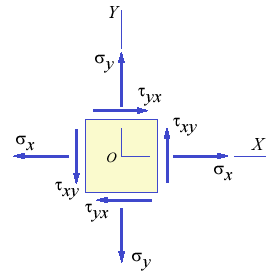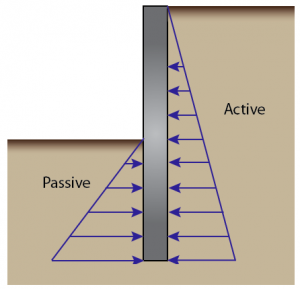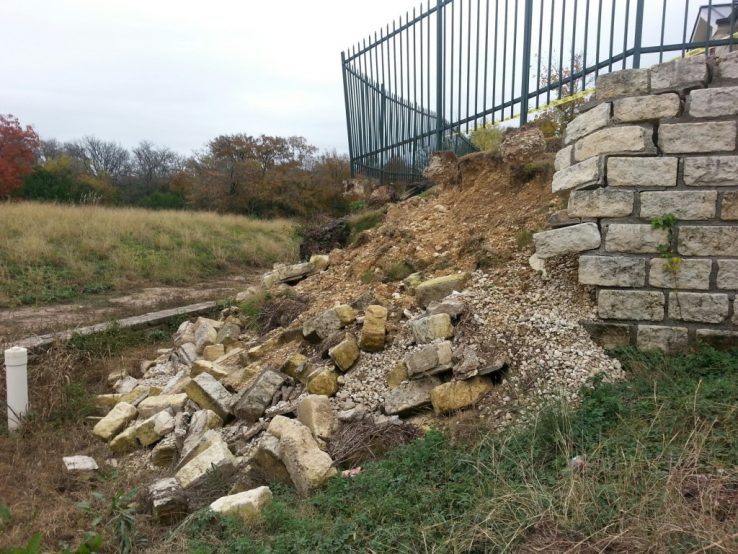Lateral earth pressure
Lateral earth pressure plays a crucial part in the behavior of the soil mass. When a force is applied to a material the stress components distribute in all directions. The term of Lateral earth pressure is the pressure created in horizontal direction. The lateral earth pressure is highly in influential on the results on numerical modeling, especially for some projects such as retaining walls, basements, tunnels, deep foundations and braced excavations. The ratio of the horizontal effective stress, σ’h, to the vertical effective stress, σ’v is known as The coefficient of lateral earth pressure(K0). K0 is a function of the soil properties and soil stress history. K0 is obtained for a level ground deposit which has no lateral strain in the soil. it is also called the “at-rest” coefficient of lateral earth pressure. Jaky (1948) has suggested one of the most practical formulas which has been verified by many experimental studies.
when a retaining wall moves away from the soil, the ratio of the horizontal effective stress, σ’h, to the vertical effective stress, σ’v is called the active earth pressure Ka. Similarly, if the retaining wall pushes the soil mass, this ratio is called passive earth pressure. In other words, active pressure and passive resistance define the minimum lateral pressure and the maximum lateral resistance possible from a given mass of soil.
Many equations have been suggested to estimate the amount of these coefficients, based of empirical and analytical studies. However at rest lateral earth pressure can be measured directly by DMT or PMT, using empirical relations are much cheaper. Two of the more commonly used are presented below.

Stress component of a 2D element
![]()
![]()




Comments